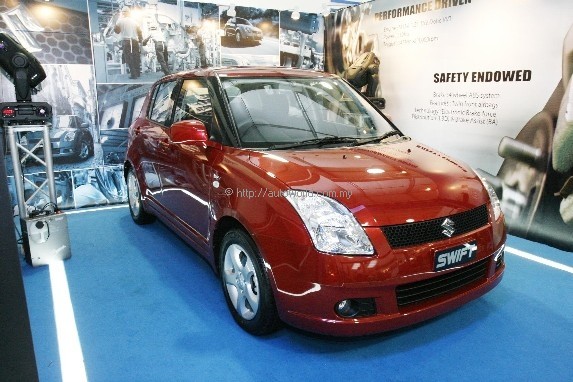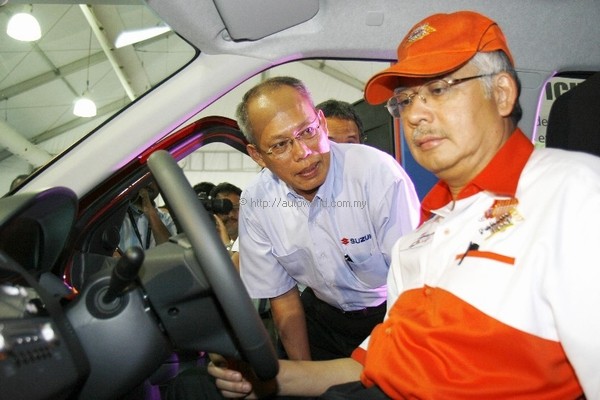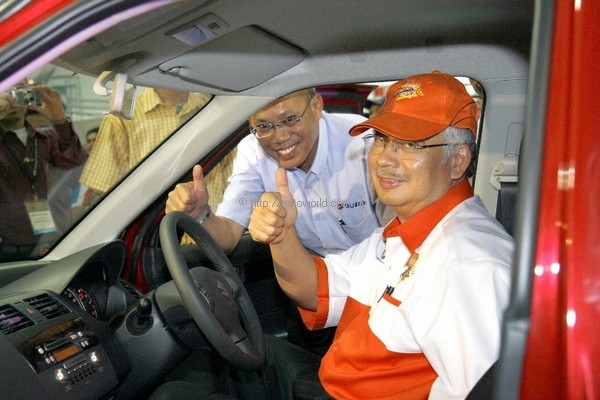Suzuki Malaysia rolls out the first locally-assembled Swift 1.5L
Pekan, Pahang, 1 June 2007 – Suzuki Malaysia Automobile Sdn. Bhd. (SMA), a wholly-owned subsidiary of DRB-HICOM Berhad, rolled out its first locally-assembled model of the Suzuki Swift 1.5L in a ceremony today held in conjunction with the Pekan Fest.
The memorable occasion was officially launched by Deputy Prime Minister Datuk Seri Najib Tun Razak.
Also present at the ceremony were DRB-HICOM Group Managing Director Datuk Haji Mohd Khamil Jamil and Suzuki Malaysia Automobile Chief Executive Officer Bastamam Hamzah.
Today’s milestone further signifies Suzuki Malaysia’s commitment to its complete knocked-down (CKD) operations for the Swift 1.5L.
In March 2006, Suzuki Malaysia signed a licensing agreement with Suzuki Motor Corporation of Japan, allowing Suzuki Malaysia to assemble the Swift in Malaysia.
Suzuki Malaysia then announced in February 2007 the launch of the robotic welding line which will be used for the assembly of the Swift 1.5L at the AMM plant in Pekan, Pahang. AMM has allocated approximately 9,000 square metres of space for this robotic welding line and it was set-up with technical support from Suzuki Motor Corporation of Japan. The initial investment for this set-up was RM 20 million.
DRB-HICOM and Suzuki Malaysia saw the need to keep pace with the market’s demand for new and more technologically-advanced products. Hence the investment of the robotic welding line reflects Suzuki Malaysia’s commitment to make Suzuki a household brand in Malaysia that builds and delivers cars known for its superior quality. CKD operations will also enable DRB-HICOM and Suzuki Malaysia to take advantage of the National Automotive Policy.
The robotic welding system consists of robots that are made up of a synergy of a manipulator for spot welding with cables and hoses built into the upper arm, a high-performance controller and a 6.5-inch color LCD on the programming pendant.
The robots are specifically designed to deliver unrivaled performance, reliability higher-quality, higher-accuracy, higher-speed and consistency. Its supreme performance definitely surpasses the results of manual welding applications.
Robotic welding technology delivers quality, productivity, and cost-effectiveness – the core values of competitiveness.
· QUALITY – The locally-assembled Swift 1.5L acquires superior quality from the robotic welding line because greater accuracy and consistency are achieved. The robots achieve an improved path accuracy of up to 50% when compared to conventional methodology and that results in uniform body integrity. Absolute-position accuracy is increased by 2 to 5 times when compared to conventional methodology. The robots also have full sensing capabilities that can detect discrepancies of the body/chassis components before it begins the welding process.
· PRODUCTIVITY – System productivity of the robotic welding line improves significantly because the robots have amazing accessibility due to its compact and slim designs which allow them to reach efficiently into confined spaces and ensures consistent repeatability without supervision.
Factors of productivity also include the fact that the robots are easily programmable with very straightforward operator training. The robotic welding system also consists of flexible and modifiable configurations that can ultimately lead to better productivity in time when certain upgrades are installed.
· COST-EFFECTIVENESS – Robots are known for their high-durability and proven ability to meet targets and replacement of parts is also rare. Implementing a robotic welding system is also speedy and cost-efficient if compared to the costs needed for rigorous training to produce skilled welders, from the relative scarcity of trained welders and from the potential effects of worker turnover and operator fatigue.
With this new robotic welding technology, Suzuki Malaysia is confident that the locally-assembled Swift 1.5L will rise to customer expectations.
Suzuki Malaysia is the first automotive company in the non-national category for small volume production to adopt this robotic welding technology and it aims to produce an initial monthly production of 300 units.




























